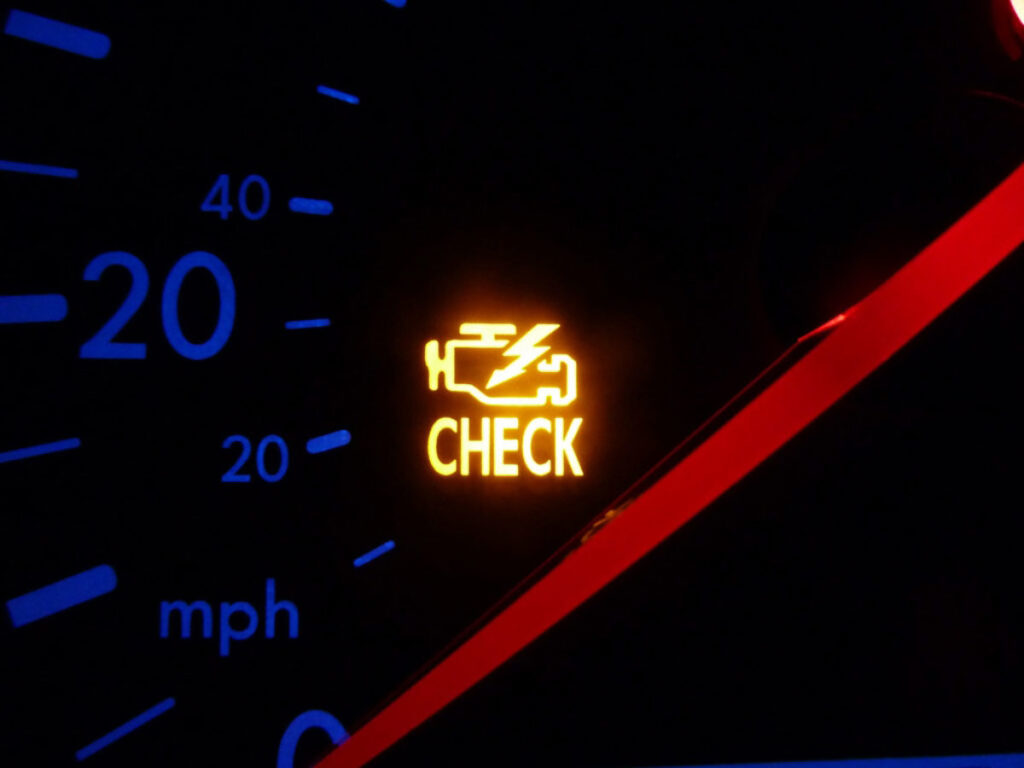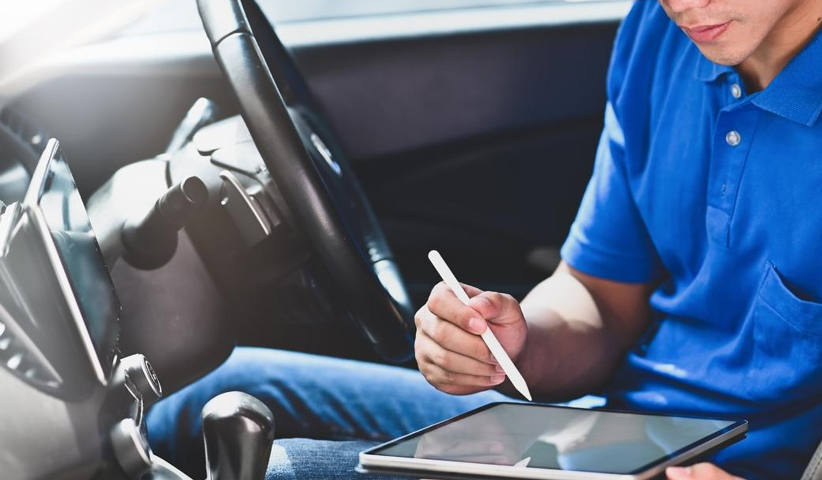A Driver Checklist Before Starting A Vehicle
Every driver should always be aware of the necessary safety checklist and operational checks before starting a vehicle and setting off on a drive.
It’s not enough for drivers to simply turn their key, shift their vehicle into Drive, and expect their car to safely take them from point A to point B. Before each drive, it is important that drivers follow a comprehensive checklist in order to ensure that their cars are safe and running optimally.
This checklist includes making sure all required maintenance has been done, being aware of traffic laws and your local area, checking tire pressure and oil levels, cleaning your windows, and more. It’s also important to remember that when driving you need to stay alert and aware at all times; this means no distractions like texting while driving!
By following the driver checklist before starting a vehicle each time you get behind the wheel can help to keep you & those around you safe. In this guide, we will explain exactly what needs to be checked off before every drive.
Safety Precautions for Drivers

When you’re about to start your vehicle, there are a few steps you need to take to ensure that you and your passengers are safe on the road. Before you begin driving and every time you are getting into the car, it’s important to review this checklist:
- Check your seatbelt and those of all passengers. Ensure that everyone is secured with their own seatbelt.
- Make sure the headlights, taillights, brake lights, turn signals and hazard warning switches are functional and turned on as needed.
- Check that all mirrors are properly adjusted.
- Inspect the tires for proper inflation and good tread depth.
- Inspect exterior lighting fixtures for any damage or cracks in lenses.
- Check all windows and mirrors for dirt or debris that might obstruct your view of the road or of other vehicles.
- Look for any warning lights or indicators on your dashboard that could signal a potential issue with the vehicle’s performance.
By taking a few moments before you start the engine to make sure these precautions have been taken, you’ll help create a safe environment both inside and outside of your car as you travel down the road.
Checklist for Vehicle Maintenance
It is important for drivers to check the condition of their car before starting any journey. This checklist can help you make sure you’re ready for the road.
- Check and adjust your mirrors. Before setting off, take a moment to double-check your rearview mirror and side mirrors are adjusted correctly.
- Test the lights and indicators. Make sure all exterior lights, signal lights, and interior lights are working properly. This will ensure that other drivers on the road can see you, increasing visibility and safety.
- Check tire pressure and tread depth. Inspect your tires to ensure they have adequate tread depth – this helps with traction on wet roads, plus contributes to fuel efficiency – and adjust tire air pressure according to the owner’s manual recommendation.
- Check fluid levels. Make sure all necessary fluids are filled up, such as motor oil, coolant, brake fluid, transmission oil, etc., as low levels may lead to damage or expensive repairs down the line.
- Listen for strange noises or smells. If your engine is making funny noises or a strange odor is coming from the car it could indicate something wrong below the hood that needs repairing before driving.
By following these simple steps every time you start a journey in your vehicle you can make sure that not only are you safe but also that an enjoyable experience is had by everyone in your car!
What to Check Before Starting the Vehicle
Starting up your vehicle isn’t as simple as just turning the ignition. Fortunately, preparing your car for a journey is a simple process that won’t take you long. Here’s what you should check before getting behind the wheel:
Lights
Ensure all lights are working correctly, including headlights, fog lights, indicators and brake lights. Having faulty lights not only decreases your visibility on the road but can also pose safety risks to others, which can result in expensive fines or even demerit points.
Oil
Having enough oil in the engine is essential to keep it running properly and increase its lifespan. If you find yourself needing to add oil frequently, then that could be an indicator of a larger issue with the vehicle that needs to be addressed by a professional mechanic.
Coolant Fluid Level
It’s important to make sure there is sufficient coolant fluid in the system when starting up your vehicle – there should be between minimum and maximum markers on the side of the reservoir tank. Coolant fluid helps regulate temperature and prevent overheating which keeps your car running smoothly and allows you to travel safely for longer distances without any worries or hiccups along the way.
Why a Pre-Start Check Is Important
Before starting your vehicle, it’s important to complete a pre-start check. A pre-start check helps ensure that your vehicle is in good condition and safe for you to drive. It’s a good idea to get into the habit of performing a pre-start check every time you start your car so you can be confident that it is roadworthy.
The most important part of the pre-start check is to make sure all systems are working properly. You should check the brakes, lights, horn, and mirrors before starting the vehicle. Additionally, you should pay attention to the fuel levels and make sure there is enough fuel for your trip. You should also check the oil level and tire pressure, as well as look for any signs of damage or leaks on the vehicle itself.
It’s also important to make sure that all occupants are wearing seatbelts correctly before moving off from a stationary position. Lastly, it’s important to observe any warnings on dashboard lights such as ABS or stability control – if anything appears out of the ordinary then you should take time to investigate further before attempting to drive away.
By completing a simple pre-start checklist each time you intend to use your vehicle, you can ensure that everyone has a safer journey during their travels in your car!
Tips for Driver Visibility and Awareness
Safety always comes first, which is why it’s important to ensure that your car is in a good condition before you hit the open road. An important part of this process is checking not just the vehicle itself, but also making sure that your visibility and awareness as a driver are up to par. Here are a few tips to help you make the most of your journey:
Check Mirrors & Blind Spots
Before starting the car, take a few moments to check all of your mirrors–and don’t forget your blind spots. Blind spots are often difficult to see, so take extra care when merging or changing lanes on the highway.
Check Your Surroundings
Make sure you know what’s around you–other vehicles, pedestrians, and cyclists. This will help you anticipate their behavior and react accordingly. Also, be aware of any obstacles that could appear suddenly in front of you, such as potholes or fallen branches.
Ensure Bright Lights
It’s important to check not only your headlights but also the brake lights and signal lights. Look out for cracked lenses or broken bulbs, and make sure they’re bright enough for passersby to notice-you may have trouble seeing in the dark otherwise!
Post-Start Checks and Adjustments
Once you have finished your pre-start checks, it is time to start your vehicle. Once the engine has started and is running smoothly, there are a few post-start checks and adjustments you should do to ensure a safe and comfortable drive.
Exterior Check
Make sure the windows, mirrors and wipers are all set to your preferences before starting out. This includes checking for any debris on the front or rear windscreens that may obstruct your view.
Lights Check
It is important to make sure all of the lights on your vehicle are working properly. Check both low beam headlights, DRLs (Daytime Running Lights), fog lights and high beam headlights as needed. Also, check that all four indicator lights are flashing correctly.
Interior Check
Inside the vehicle, you should adjust seats, mirrors and other amenities to fit your comfort while driving. For safety’s sake, make sure your seatbelt is fastened securely before driving off and adjust headrests to a comfortable but secure position – this will help protect you in case of an accident. Finally, if you have additional passengers in the car, ensure that they have their seatbelts securely fastened as well.
Conclusion
Driving responsibly and safely is a responsibility that shouldn’t be taken lightly. As a driver, you owe it to yourself, your passengers and other motorists to take the necessary precautions before starting a vehicle. To be sure you’re ready to get on the road, use this checklist as a guide to double check that all safety precautions and maintenance needs are taken care of. Doing so not only ensures a smooth, safe trip, but also peace of mind and greater control of the vehicle.


